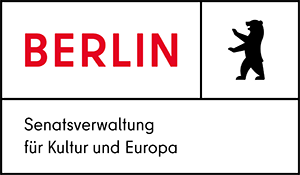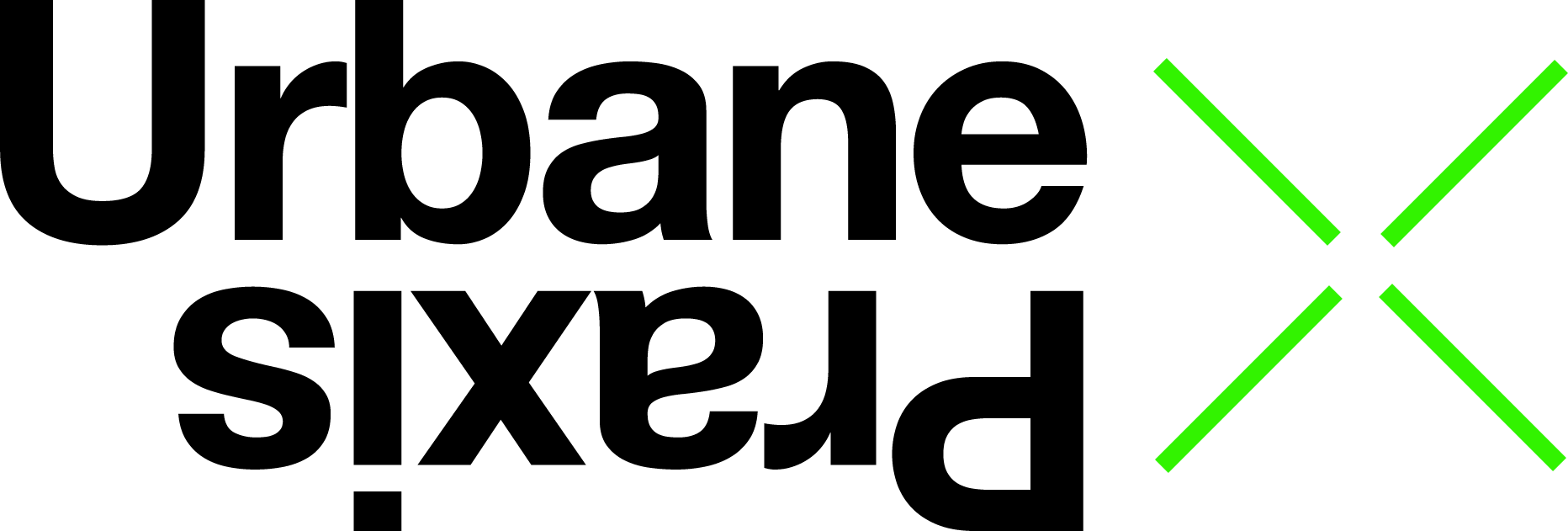15 September 2022–4 February 2023
Opening:
14 September 2022
Artists
Dana Kavelina, Mikhail Lylov, Guglielmo Piva, David Riff, Eran Schaerf, Madeleine Stöber
Participants
Hans D. Christ, Iris Dressler, Dr. Julia Friedrich, Peter Nestler, Eran Schaerf, Oliver Sukrow, Dr. Urs Verweyen
Project group station urbaner kulturen
Juan Camilo Alfonso Angulo, Jochen Becker, Eva Hertzsch, Margarete Kiss, Constanze Musterer, Adam Page, Ralf Wedekind
Art Direction
An exhibition about an exhibition about exhibitions
Salud – Picasso Speaking. ‘Guernica’ and the War in the Cities revisits traces and threads of the (art) histories associated with Picasso and relates them to current conflicts.
There was an international war raging in Europe, to which the Spanish-French artist Pablo Ruiz Picasso had responded with his monumental painting Guernica. Picasso’s famous Dove of Peace, which Bertolt Brecht used, without asking, on the Berliner Ensemble’s theater curtain in 1953, followed later. Despite his doves of peace, the GDR authorities remained suspicious towards the “formalist” Picasso. The theater curtain remained in use until 1993 and has been recently reused on the occasion of the Russian invasion of Ukraine.
Some of these stories were recently recalled in the outstanding exhibition The Divided Picasso in Museum Ludwig in Cologne. The exhibition also referred to the NGBK’s (since 2012 nGbK) traveling show Art and Politics in the case of Guernica. Picasso and the Spanish Civil War from 1975 which was presented in numerous West German schools, cultural centers and even at the Venice Biennale. The show was exemplified by a WDR television report in which teenagers in a comprehensive school in Essen spoke of their dreams of a more peaceful future. The NGBK’s “didactic exhibition” criticized the war crimes of the German Army (germ. Wehrmacht) and analytically dissected Picasso’s panoramic painting Guernica into meaningful individual parts. Here, West Berlin’s artistic Left showed that its association to the GDR went beyond the geography of the NGBK’s location at the Kreuzberg border to East Berlin.
The exhibition title quotes Picasso as he picked up the phone in his symbolic role as director of the Prado Museum to speak to the Second American Artists’ Congress (AAC) in New York in December 1937, in the middle of the Spanish Civil War. He continued his address by demanding solidarity with the international resistance to Franco, Hitler and Mussolini. In 1939, the AAC managed to bring Guernica to New York to raise money to help Spanish refugees. After further journeys, the painting ended up in MoMA until it returned to a democratic Spain in 1981.
The artist, who had fled Franco’s fascism and had long been stateless and without legal rights in France, joined the Communist Party in 1944. In exile, Picasso maintained connections with the illegal Spanish CP and donated large amounts of money to his comrades. Although the artist rarely left his various studios after 1945, he was regularly present at peace congresses in Rome, Moscow and Sheffield. However, the “divided Picasso” never travelled to the successor states which had formed after the dismantling of the German Reich.
Salud – Picasso Speaking. ‘Guernica’ and the War in the Cities gathers material and stories in an exhibition about an exhibition about exhibitions. Berlin-based artist Eran Schaerf will reflect on the Cologne exhibition which he curated with Julia Friedrich (formerly curator at Museum Ludwig, now at Jewish Museum Berlin). The Hellersdorf exhibition will also look at Picasso’s equally unique and ambivalent role as a global artist around whom a posthumous exploitation industry thrives. The Berlin-based Russian artist Mikhail Lylov and the Ukrainian artist Dana Kavelina will dedicate a sound work to this issue, in collaboration with David Riff and Guglielmo Piva.
Events:
Wednesday, 14 September 2022, from 18:00
Opening as part of Berlin Art Week
Thursday, 27 October 2022, 19:00 (de)
station urbaner kulturen + Zoom
Talk “Josep ‘José’ Renau in Hellersdorf” with Oliver Sukrow (art historian, Vienna/Mannheim)
Talk with Oliver Sukrow (art historian, Vienna/Mannheim) about the active artist and functionary Josep ‘José’ Renau, who as Art Commissioner for Spain gave Picasso the commission for Guernica in 1937 and later lived in an artist studio and house in Hellersdorf-Mahldorf.
Josep Renau, the Spanish painter, graphic and photomontage artist as well as cultural politician, university lecturer and muralist was born in Valencia in 1907 and died in East Berlin in 1982. As an artist, he worked in the tradition of John Heartfield. He rescued art treasures from the Prado Art Museum in Madrid before their destruction by Franco’s troops, he collaborated in exile in Mexico with the collective close to the muralist David Alfaro Siqueiros, he worked as an animator for East-German television, and he created large-scale futuristic murals in Halle and Erfurt in the 1970s and 1980s.
“In the GDR’s stylistically conservative environment, Renau was on the one hand an avant-garde artist and on the other hand a communist. He was a real revolutionary in a world ruled by bureaucrats. (…) In the GDR he was a communist, a Stalinist, and his thinking was shaped by that. Regarding his work, his feelings and his art, that was different.” (Albert Forment)
Friday, 18 November 2022, 19:00 (de)
station urbaner kulturen + Zoom
Talk “The Making of ‘Picasso Shared and Divided’” with Eran Schaerf (artist/designer, Berlin) and Julia Friedrich (curator, formerly Museum Ludwig Cologne)
Impetus for the exhibition Salud - Picasso Speaking. Guernica and the War in the Cities was provided by the groundbreaking Cologne exhibition Picasso Shared and Divided at Museum Ludwig. The museum is the repository of nearly 1,000 of the artist’s works, which Peter Ludwig, who gave the museum its name, had accumulated over decades, and thus also confronts its own history. The focus is on the artist Pablo Ruiz Picasso and his multifaceted work, which was received in two different ways in East and West Germany. While in the West he was always more of a figure in the gossip rags or major events, in the East he was often limited to the dove of peace – for example as the signet of the Brecht Theater – or a few prints.
The expansive Picasso project in Cologne curated by Julia Friedrich would hardly have been possible without the installation of the installative conceptual artist Eran Schaerf. In conversation at the station urbaner kulturen/nGbK Hellersdorf, both will report on their lengthy work, which was extremely hurdled by legal issues.
In formal terms, the large-scale installation in Cologne already approaches the enlightened traveling exhibition Art and Politics (1975) using Guernica as an example by the Kreuzberg art association NGBK, which has now been partially reconstructed in Hellersdorf with the help of new files and material. The “didactic exhibition” raced against the crime of the Wehrmacht and analytically dissected the panoramic image Guernica into meaningful individual parts.
Tuesday, 13 December 2022, 19:00 (de)
station urbaner kulturen
Talk “To Spain!” with Peter Nestler
To Spain!
A conversation with the documentary filmmaker about his latest film Picasso in Vallauris
The documentarist Peter Nestler (born in Freiburg in 1937, resident near Stockholm since 1966) has worked on numerous social and political upheavals, motivated partly by his civil engagement and party by his professional interest. Nestler made, for example, the short documentary film Spain! (1973) for WDR about the anti-fascist civil war in Spain, which was awarded Best Short Film at the German Film Critics’ Awards.
For the exhibition Picasso Shared and Divided at the Museum Ludwig in Cologne, Nestler made his latest film Picasso in Vallauris (2020) about Picasso’s mural War and Peace (1949-54). Set in today’s Vallauris in the south of France, the film looks at the creation and the legacy of this monumental painting which embraces all the walls of a chapel.
Thursday, 12 January 2023, 19:00 (de)
station urbaner kulturen + Zoom
Lecture „Alles von der Kunstfreiheit gedeckt? Collagen, recherchebasierte Arbeiten – Pastiche als Schutz von Kunst- und Meinungsfreiheit“
An information event by the lawyer Urs Verweyen with subsequent discussion
Thursday, 2 February 2023, 19:00 (de)
station urbaner kulturen + Zoom
Book presentation and discussion “50 Jahre nach 50 Jahre Bauhaus“ with Iris Dressler and Hans D. Christ (Directors Württembergischer Kunstverein Stuttgart)
In the context of the exhibition Salud - Picasso Speaking. Guernica and the War in the Cities at the station urbaner kulturen/nGbK Hellersdorf, Hans D. Christ and Iris Dressler present their latest publication 50 Jahre nach 50 Jahre Bauhaus (50 Years after 50 Years of Bauhaus) and relate it to aspects of the show - especially in relation to the Spanish Pavilion at the 1937 Paris World’s Fair.
Contrary to the historicizing reception of the Bauhaus in 1968, which is reduced to West Germany and the United States, 50 Jahre nach 50 Jahre Bauhaus reflects on the famous school in the context of artistic movements such as the Mouvement International pour un Bauhaus Imaginiste or the Situationist International.
On May 4, 1968, and a few hours after protests by revolting students in Paris led to the evacuation of the Sorbonne University, the exhibition 50 Years of the Bauhaus opened at the Württembergischer Kunstverein. The show, conceived by Herbert Bayer, Ludwig Grote, Hans Maria Wingler and the then Kunstverein director Dieter Honisch, is still considered one of the most influential exhibitions on the Bauhaus project. At the same time, less than 100 kilometers away, the Hochschule für Gestaltung in Ulm was being wound up. This was considered the—then last—resurrection of the Bauhaus, which had repeatedly been driven out of Germany.
50 years after the opening of 50 Years of the Bauhaus, the Württembergischer Kunstverein undertook a critical re-reading of the 1968 exhibition as well as the opportunistic politics of many of the actors. In particular, the ambivalent relations between various of the movements prominent protagonists and National Socialism were analyzed. This referred, among other things, to the developments of the modern exhibition display between experiment and political propaganda. But also the relationship between the artistic avant-gardes and the industrial-military complex was taken into consideration.
Based on their publication, Dressler and Christ talk about the collective curatorial methods of the Stuttgart project—not least about the historical ties between the Württembergischer Kunstverein and the former NGBK, which this event aims to revive.
Financed by


 station urbaner kulturen/nGbK Hellersdorf is part of Urbane Praxis.
station urbaner kulturen/nGbK Hellersdorf is part of Urbane Praxis.
